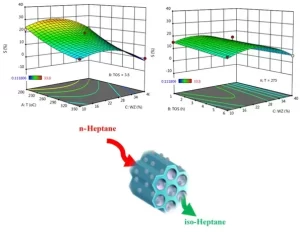In this study, a vapor permeation-integrated heterogeneous catalytic esterification reaction was investigated to improve the ester conversion of propionic acid and isopropanol. The reaction was carried out using Amberlyst 15 (Rohm & Haas) as a catalyst with different weight fractions of 3%, 4%, 10%, and 12% wt. relative to propionic acid. A hydrophilic PERVAP®2201 membrane […]
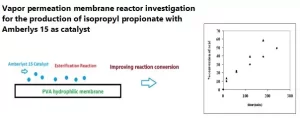
Organic dyes are among the main sources of water pollution that cause serious health problems for living organisms. Removing dye pollution from water sources is important because of its high toxicity, so it has attracted the interest of researchers. Heterogeneous photocatalysis based on ZnO is one of the most important methods of pollution treatment. The […]
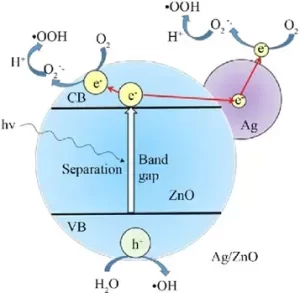
It’s fascinating to see how much research has been done on ferrite nanoparticles over the past few years. These small magnetic particles have unique properties that allow them to be manipulated at a very small scale. This review article is focused on the preparation of ferrite magnetic nanoparticles and silica-coated ferrite nanoparticles using various functionalized […]
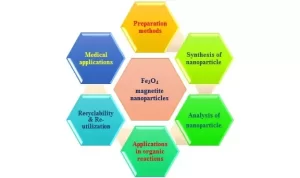
Due to a significant increase in the demand for usable power, research focused on energy-material relations has garnered considerable attention. Fuel cells, characterized by their high efficiency, high energy density, quiet operation, and environmental friendliness, are regarded as a promising future power source that provides clean power at the point of use. The incorporation of […]

Chemical bath deposition (CBD) was used to prepare titanium dioxide (TiO2) nanocrystalline thin films on glass substrates. The TiO2 nanocrystalline thin films were created, and the Scanning Electron Microscope (SEM) images showed that they developed as nanoflowers and tiny semi-nanoplate bundles that grew vertically onto the surface of the substrates with uniform distribution. The nanoplate […]
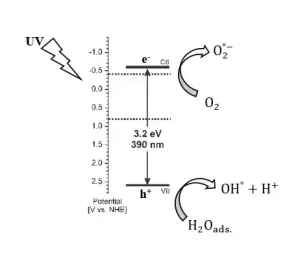
A novel organic-inorganic hybrid magnetic nanomaterial, namely nano-[Fe3O4@SiO2@R-NMe2][FeCl4] (nano-[FSRN][FeCl4]) was prepared, and characterized by EDX, elemental mapping, FE-SEM, FT-IR, XRD, VSM, TG and DTG analyses. Then, it was applied as a highly efficient and magnetically recyclable catalyst for the solvent-free synthesis of bis-coumarins from 4-hydroxycoumarin (2 eq.) and arylaldehydes (1 eq.). NMe2 is a basic […]
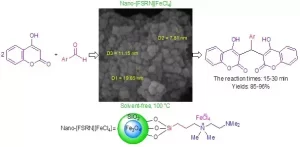
A highly efficient, eco-friendly procedure has been proposed for the synthesis of 2-amino-3-phenylsulfonyl-4H-pyran derivatives via nano-cellulose-OSnCl4-x catalyst prepared from cotton as support treated with tin tetrachloride (SnCl4). This catalyst is characterized by FT-IR, FESEM, TEM, TGA, and EDX. The TEM results confirmed the size of the nano-cellulose-OSnCl4-x catalyst was below 30 nm. The efficiency of […]

This study investigates the effect of a combination of copper and magnesium oxide nanoparticles embedded in a Polyvinyl chloride (PVC) matrix on photocatalytic activity. A thin film of CuO/MgO/PVC nanocomposites (NCs) was synthesized using the sol-gel route. Different weight percentages of CuO/MgO nanocomposites (5% and 15%) incorporated in the PVC matrix were deposited on glass […]
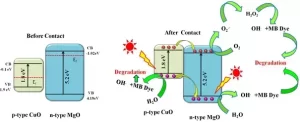
In this study, we synthesized ethyl levulinate (EL) by alcoholysis of furfuryl alcohol (FAL) with ethanol using two catalysts, SBA-15-SO3H (SHS-15) and SBA-16-SO3H (SHS-16). The catalysts were prepared through the hydrothermal method, and their physical and chemical properties were assessed using various techniques such as small and wide-angle XRD, N2-sorption, SEM, TEM, FTIR, and Py-FTIR. […]
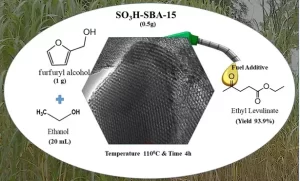
In this work, the Response Surface Methodology (RSM) was investigated by applying the Design of the Experiment in normal heptane isomerization. The design was guided to three surface responses on the dependency of normal heptane conversion, isomerization selectivity, and research octane number on the reaction temperature (200 – 350 °C), the weight percentage of protonated […]
